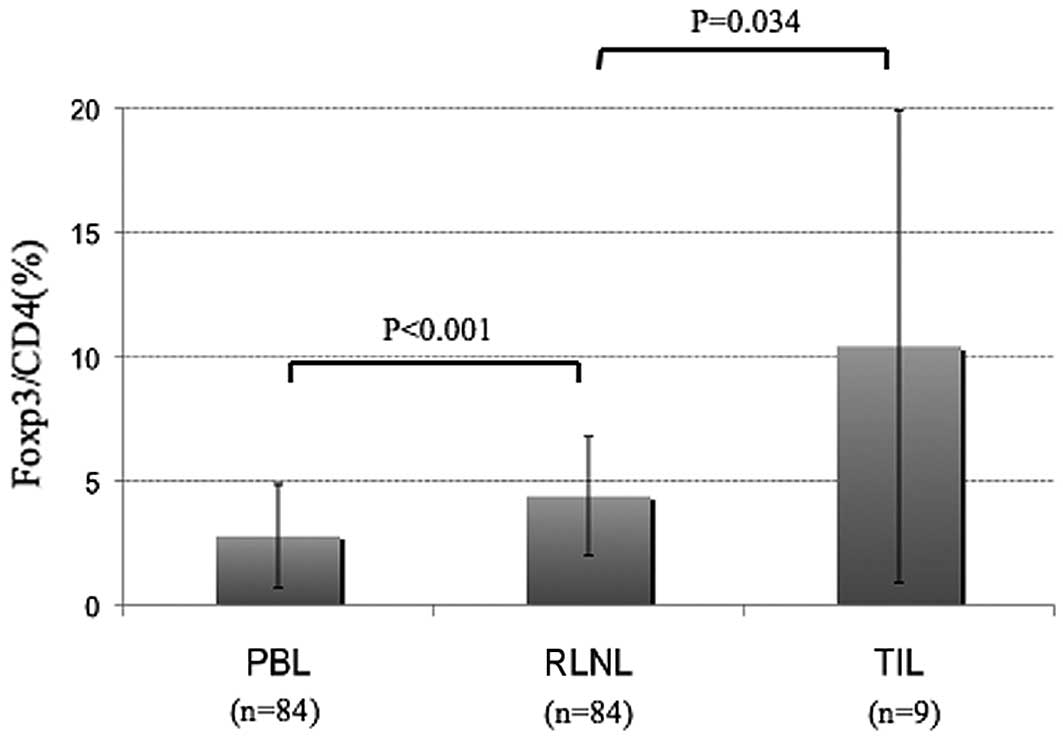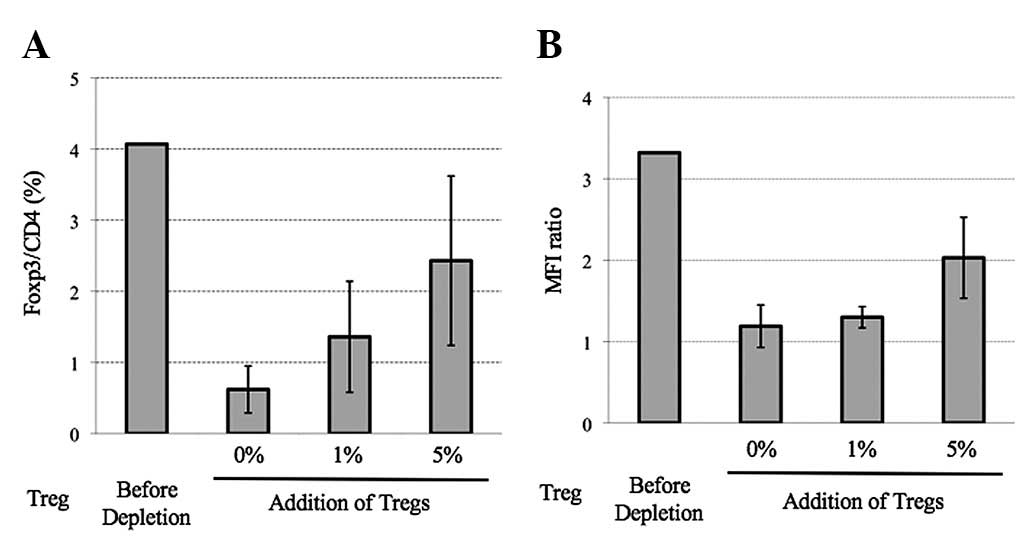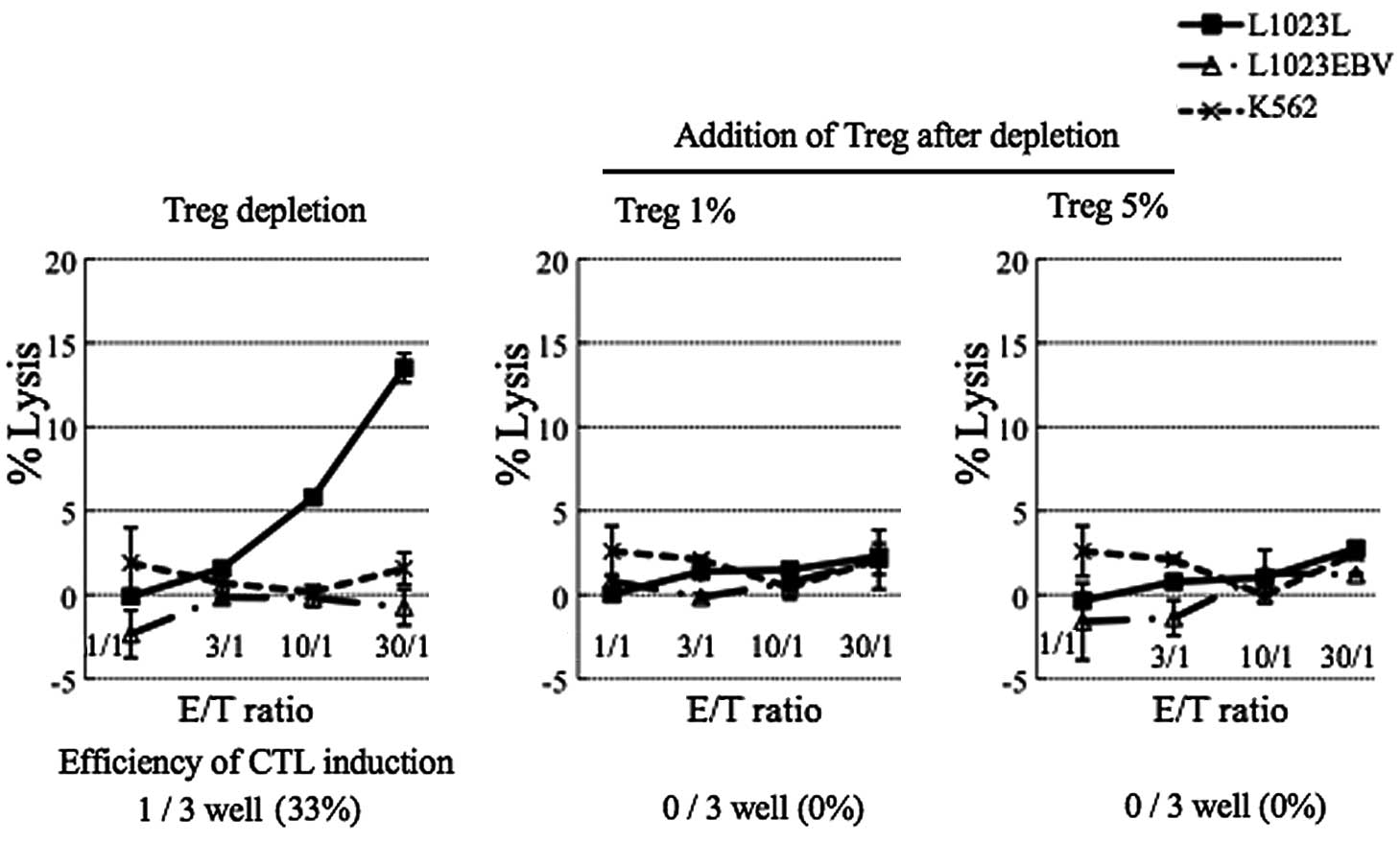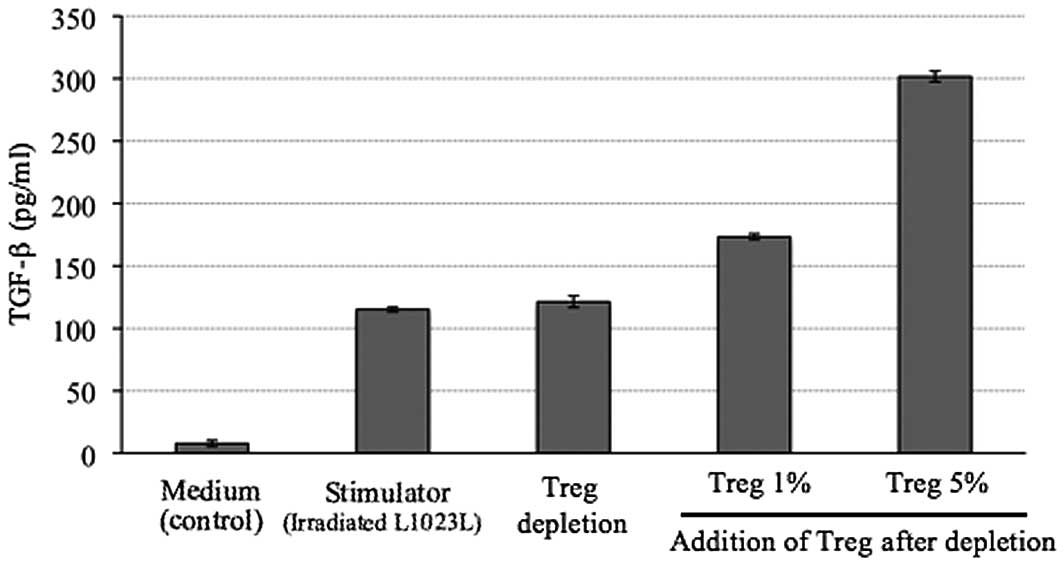|
1.
|
A JemalR SiegelE WardT MurrayJ XuMJ
ThunCancer statistics, 2007CA Cancer J
Clin574366200710.3322/canjclin.57.1.43
|
|
2.
|
R SanghaC ButtsL-BLP25: a peptide vaccine
strategy in non small cell lung cancerClin Cancer
Res1346524654200710.1158/1078-0432.CCR-07-0213
|
|
3.
|
J VansteenkisteM ZielinskiA LinderFinal
results of a multi-center, double-blind, randomized,
placebo-controlled Phase II study to assess the efficacy of MAGE-A3
immuno-therapeutic as adjuvant therapy in stage IB/II non-small
cell lung cancer (NSCLC)J Clin OncolSuppl 25398s2007
|
|
4.
|
P van der BruggenC TraversariP ChomezA
gene encoding an antigen recognized by cytolytic T lymphocytes on a
human melanomaScience254164316471991
|
|
5.
|
Y IchikiM TakenoyamaM MizukamiSimultaneous
cellular and humoral immune response against mutated p53 in a
patient with lung cancerJ
Immunol17248444850200410.4049/jimmunol.172.8.484415067062
|
|
6.
|
M TakenoyamaJF BaurainM YasudaA point
mutation in the NFYC gene generates an antigenic peptide recognized
by autologous cytolytyic T lymphocytes on a human squamous cell
lung carcinomaInt J
Cancer11819921997200610.1002/ijc.2159416287085
|
|
7.
|
F PagesA BergerM CamusEffector memory T
cells, early metastasis, and survival in colorectal cancerN Engl J
Med35326542666200510.1056/NEJMoa05142416371631
|
|
8.
|
L ZhangJR Conejo-GarciaD
KatsarosIntratumoral T cells, recurrence, and survival in
epithelial ovarian cancerN Engl J
Med348203213200310.1056/NEJMoa02017712529460
|
|
9.
|
SA RosenbergJC YangNP RestifoCancer
immunotherapy: moving beyond current vaccinesNat
Med10909915200410.1038/nm110015340416
|
|
10.
|
MK LevingsR SangregorioMG RoncaroloHuman
cd25(+) cd4(+) t regulatory cells suppress naïve and memory T cell
proliferation and can be expanded in vitro without loss of
functionJ Exp Med193129513022001
|
|
11.
|
EM ShevachCertified professionals:
CD4(+)CD25(+) suppressor T cellsJ Exp Med1934146200111390442
|
|
12.
|
H JonuleitE SchmittG SchulerJ KnopAH
EnkInduction of interleukin 10-producing, non proliferating CD4(+)
T cells with regulatory properties by repetitive stimulation with
allogeneic immature human dendritic cellsJ Exp
Med192121312222000
|
|
13.
|
S ReadF PowrieCD4(+) regulatory T
cellsCurr Opin Immunol136446492001
|
|
14.
|
AR GibbsFB ThunnissenHistological typing
of lung and pleural tumours: third editionJ Clin
Pathol54498499200110.1136/jcp.54.7.49811429418
|
|
15.
|
CF MountainRevisions in the international
system for staging lung
cancerChest11117101717199710.1378/chest.111.6.17109187198
|
|
16.
|
M SugayaM TakenoyamaT OsakiEstablishment
of 15 cancer cell lines from patients with lung cancer and the
potential tools for
immunotherapyChest122282288200210.1378/chest.122.1.28212114371
|
|
17.
|
M TakenoyamaI YoshinoR EifukuSuccessful
induction of tumor-specific cytotoxic T lymphocytes from patients
with non-small cell lung cancer using CD80-transfected autologous
tumor cellsJpn J Cancer
Res92309315200110.1111/j.1349-7006.2001.tb01096.x11267941
|
|
18.
|
T FukuyamaY IchikiS YamadaCytokine
production of lung cancer cell lines: correlation between their
production and the inflammatory/immunological responses both in
vivo and in vitroCancer
Sci9810481054200710.1111/j.1349-7006.2007.00507.x
|
|
19.
|
S SakaguchiM OnoR
SetoguchiFoxp3+ CD25+ CD4+ natural
regulatory T cells in dominant self-tolerance and auto-immune
diseaseImmunol Rev2128272006
|
|
20.
|
JD FontenotMA GavinAY RudenskyFoxp3
programs the development and function of
CD4+CD25+ regulatory T cellsNat
Immunol4330336200310.1038/ni90412612578
|
|
21.
|
AM WolfD WolfM SteurerG GastlE GunsiliusB
Grubeck-LoebensteinIncrease of regulatory T cells in the peripheral
blood of cancer patientsClin Cancer Res9606612200312576425
|
|
22.
|
LA OrmandyT HillemannH WedemeyerMP MannsTF
GretenF KorangyIncreased populations of regulatory T cells in
peripheral blood of patients with hepatocellular carcinomaCancer
Res6524572464200510.1158/0008-5472.CAN-04-323215781662
|
|
23.
|
EY WooCS ChuTJ GoletzRegulatory
CD4(+)CD25(+) T cells in tumors from patients with early-stage
non-small cell lung cancer and late-stage ovarian cancerCancer
Res61476647722001
|
|
24.
|
TJ CurielG CoukosL ZouSpecific recruitment
of regulatory T cells in ovarian carcinoma fosters immune privilege
and predicts reduced survivalNat
Med10942949200410.1038/nm109315322536
|
|
25.
|
GJ BatesSB FoxC HanQuantification of
regulatory T cells enables the identification of high-risk breast
cancer patients and those at risk of late relapseJ Clin
Oncol2453735380200610.1200/JCO.2006.05.958417135638
|
|
26.
|
F GhiringhelliC MenardM
TermeCD4+CD25+ regulatory T cells inhibit
natural killer cell functions in a transforming growth
factor-h-dependent mannerJ Exp Med20210751085200516230475
|
|
27.
|
RP PetersenMJ CampaJ SperlazzaTumor
infiltrating Foxp3+ regulatory T-cells are associated
with recurrence in pathologic stage I NSCLC
patientsCancer10728662872200617099880
|
|
28.
|
JC MarieJJ LetterioM GavinAY
RudenskyTGF-beta 1 maintains suppressor function and Foxp3
expression in CD4+CD25+ regulatory T cellsJ
Exp Med20110611067200510.1084/jem.2004227615809351
|
|
29.
|
G WieczorekA AsemissenF ModelQuantitative
DNA methylation analysis of FOXP3 as a new method for counting
regulatory T cells in peripheral blood and solid tissueCancer
Res69599608200910.1158/0008-5472.CAN-08-236119147574
|
|
30.
|
TL WalunasCY BakkerJA BluestoneCTLA-4
ligation blocks CD28-dependent T cell activationJ Exp
Med1832541255019968676075
|
|
31.
|
MF KrummelJP AllisonCD28 and CTLA-4 have
opposing effects on the response of T cells to stimulationJ Exp
Med182459465199510.1084/jem.182.2.459
|
|
32.
|
S ReadV MalmstromF PowrieCytotoxic T
lymphocyte-associated antigen 4 plays an essential role in the
function of CD25(+)CD4(+) regulatory cells that control intestinal
inflammationJ Exp Med1922953022000
|
|
33.
|
B SalomonDJ LenschowL RheeB7/CD28
costimulation is essential for the homeostasis of the
CD4+CD25+ immunoregulatory T cells that
control autoimmune
diabetesImmunity12431440200010.1016/S1074-7613(00)80195-810795741
|
|
34.
|
NJ KarandikarCL VanderlugtTL WalunasSD
MillerJA BluestoneCTLA-4: A negative regulator of autoimmune
diseaseJ Exp Med184783788199610.1084/jem.184.2.7838760834
|
|
35.
|
MC BrunnerCA ChambersFK ChanJ HankeA
WinotoJP AllisonCTLA-4-Mediated inhibition of early events of T
cell proliferationJ Immunol16258135820199910229815
|
|
36.
|
DR LeachMF KrummelJP AllisonEnhancement of
antitumor immunity by CTLA-4
blockadeScience27117341736199610.1126/science.271.5256.17348596936
|
|
37.
|
A van ElsasAA HurwitzJP AllisonCombination
immunotherapy of B16 melanoma using anti-cytotoxic T
lymphocyte-associated antigen 4 (CTLA-4) and granulocyte/macrophage
colony-stimulating factor (GM-CSF)-producing vaccines induces
rejection of subcutaneous and metastatic tumors accompanied by
autoimmune depigmentationJ Exp Med1903553661999
|
|
38.
|
A van ElsasRP SutmullerAA
HurwitzElucidating the autoimmune and antitumor effector mechanisms
of a treatment based on cytotoxic T lymphocyte antigen-4 blockade
in combination with a B16 melanoma vaccine: comparison of
prophylaxis and therapyJ Exp Med1944814892001
|
|
39.
|
FS HodiMC MihmRJ SoifferBiologic activity
of cytotoxic T lymphocyte-associated antigen 4 antibody blockade in
previously vaccinated metastatic melanoma and ovarian carcinoma
patientsProc Natl Acad Sci
USA10047124717200310.1073/pnas.0830997100
|
|
40.
|
GQ PhanJC YangRM SherryCancer regression
and autoimmunity induced by cytotoxic T lymphocyte-associated
antigen 4 blockade in patients with metastatic melanomaProc Natl
Acad Sci USA10083728377200310.1073/pnas.153320910012826605
|
|
41.
|
FS HodiM ButlerDA ObleImmunologic and
clinical effects of antibody blockade of cytotoxic T
lymphocyte-associated antigen 4 in previously vaccinated cancer
patientsProc Natl Acad Sci
USA10530053010200810.1073/pnas.071223710518287062
|
|
42.
|
AJ KormanKS PeggsJP AllisonCheckpoint
blockade in cancer immunotherapyAdv
Immunol90297339200610.1016/S0065-2776(06)90008-X16730267
|
|
43.
|
A RibasDC HansonDA NoeTremelimumab
(CP-675,206), a cytotoxic T lymphocyte associated antigen 4
blocking monoclonal antibody in clinical development for patients
with
cancerOncologist12873883200710.1634/theoncologist.12-7-87317673618
|
|
44.
|
T YamaguchiK HirotaK NagahamaControl of
immune responses by antigen-specific regulatory T cells expressing
the folate
receptorImmunity27145159200710.1016/j.immuni.2007.04.01717613255
|


















